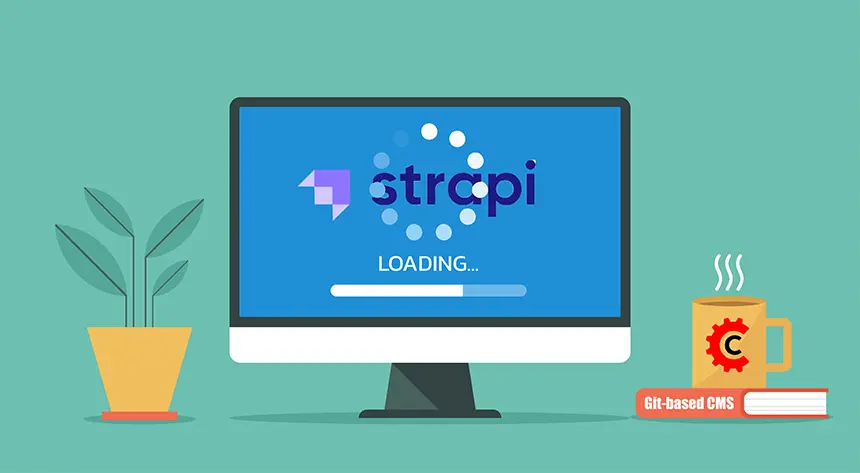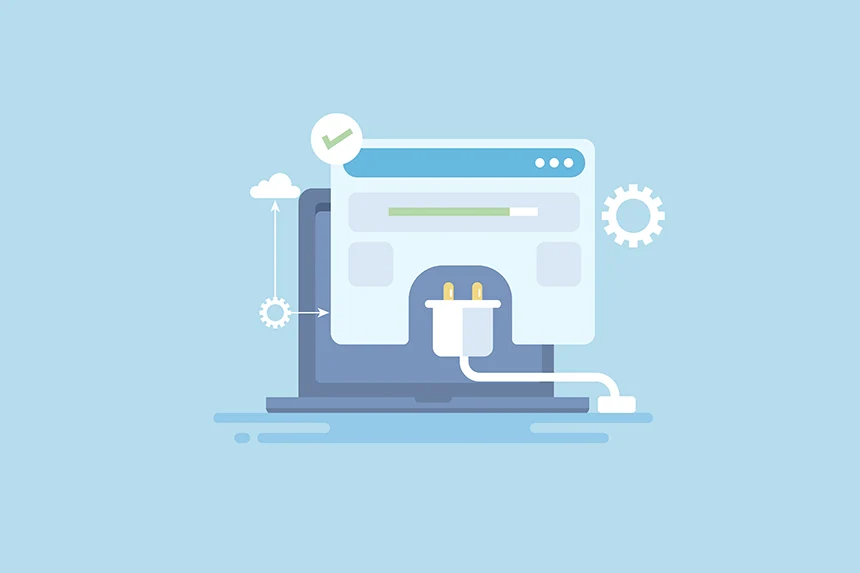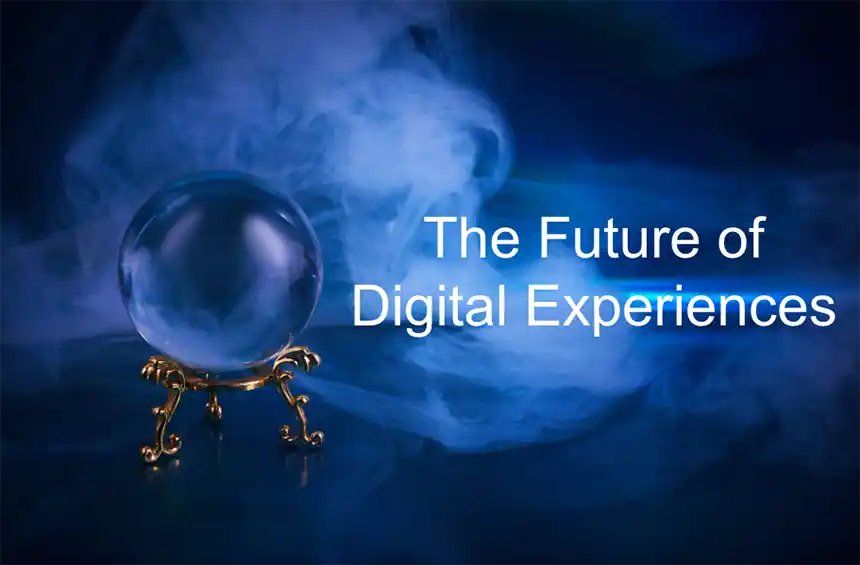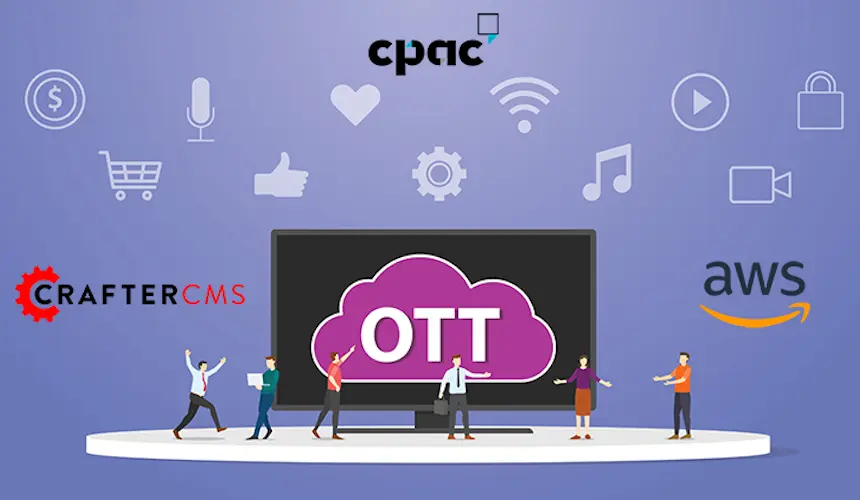Strapi Alternatives: Why Enterprises Choose CrafterCMS

Sara Williams

Finding the perfect content management system (CMS) to serve all your content and digital assets is never an easy choice for any enterprise. Why? Because there are just so many options available, especially considering the different types of CMS solutions that are available.
Each of these CMSs has its own unique advantages that make it stand out. However, the vast majority are traditional CMSs that are monolithic and inflexible. Over the past few years, there’s been a growing surge in the adoption of headless CMS, with 64% of enterprise respondents in a WP engine report currently using a headless approach in 2021. Even with that, 90% of enterprises not using it intend to explore headless alternatives in the coming year.
Strapi is a perfect example of a headless CMS. Like all headless CMS, it offers extensive flexibility options for data modeling and APIs to deliver over any digital touchpoint. Despite the notable benefits of Strapi, it has its drawbacks that limit its use for enterprises. These include its relatively poor authoring and delivering capabilities, inadequate documentation, insufficient extensions option options, and production difficulties.
This article will explore the benefits and drawbacks of using Strapi over alternatives like CrafterCMS.
What is Strapi?
Strapi is an open-source, frontend-agnostic headless CMS that helps you deliver content across any digital channel of your choice. It reduces the development time by giving developers the freedom to select their favorite frameworks and tools. Additionally, Strapi offers a basic user interface for editing content. It is free, self-hosted software that comes with several useful plugins.
Like all headless-only solutions, Strapi only offers limited functionalities for managing content and users. It’s up to you to determine the rest of your website's components, including database and display tools.
Strapi lets you choose from many database options such as PostgreSQL, SQLite, MongoDB, MySQL, or MariaDB, according to your needs. Likewise, you can choose what technology you will use to display your content. You don't have to use any specific framework, rendering engine, or ready-made template. Do you want to use React? Or Next.js? Maybe Angular? Not a problem.
However, Strapi is not without its problems.
Drawbacks and Limitations of Strapi
The following are some of the limitations that enterprises may find when trying to use Strapi.
Poor Developer Experience
Using a headless CMS like Strapi allows IT teams to create custom frontend applications tailored to specific business requirements. Great, right? Not exactly. On top of being a labor-intensive process and entirely reliant on developers to code from scratch, a custom-built frontend tends to increase the total cost of ownership (TCO) and prolong your time-to-market.
Not just that, developers will be the only ones capable of maintaining and providing support for the frontend application. As marketers are oblivious to its maintenance and support, the IT department will also be responsible for implementing any requested changes to the frontend application. With their heavy workloads, these changes could take weeks to complete, easily resulting in code and content freezes.
Complex and Frequent Updates
While the previous limitations relate to all pure headless solutions, this one is pertinent to Strapi. Although continuous and frequent updates indicate a growing ecosystem, it may not be convenient for organizations with large content repositories. Often, they introduce breaking changes that make it difficult to upgrade production systems without complete end-to-end testing.
Database-Centric Architecture
Like many CMSs, Strapi is built around a database. Databases, whether of the SQL or NoSQL variety, have limited support for versioning models and content auditing. Not to mention the inherent security holes in many databases. Most difficult, however, is the management of database-centric CMSs when it comes to developer workflows and production scalability. Moving content and code among environments requires database sync operations, and scaling databases on a global scale is cumbersome and error-prone.
Database Migration Issues
Strapi enables seamless creation and updating of all content types. As a result, the migration of databases between multiple environments must be managed manually. If the permissions of an entity in one environment changes, the database should reflect the change. Migration files are not available. Instead, you'll have to implement custom migration solutions or adjust permissions manually. This can be incredibly complex and tasking for any enterprise.
Insufficient Documentation
Despite the numerous use cases and deployment possibilities of Strapi, its documentation fails to address and provide solutions to several common questions. For instance, there’s no documentation or example code for a frontend written in React Typescript and deployed on Azure as a Static Web App with Strapi.
Similarly, some parts of the documentation are outdated and confusing. According to a Strapi user on G2, there's a section in the documentation that states that custom deployments require 2GB of processing power. Meanwhile, the documentation on Heroku says something entirely different, stating that 512MB is required.
Limited Plugins
It shouldn’t come as a surprise that there are a limited number of plugins available. For instance, some companies may want a plugin for social media management, which Strapi doesn’t offer yet. This may mean waiting for Strapi to update the plugin library or needing to build a customized one in-house.
Why Enterprises Need a Strapi Alternative
Before deciding on an alternative to Strapi, you should note and evaluate the benefits that other platforms may provide. Let’s explore some reasons for selecting a Strapi alternative.
Better Developer Experience
Since Strapi is a database-oriented headless solution, there are bound to be silos between environments that impose bottlenecks on developer workflows. Moving content and code between environments require content freezes, which imposes constraints on the content authors as well.
Better Content Author Experience
Like many headless-only CMSs, Strapi offers limited support for content authoring teams. For any enterprise-scale digital experiences, content creators, editors, reviewers, and publishers require powerful and easy to use tools.
CrafterCMS: Enterprise Alternative to Strapi
CrafterCMS is an enterprise-grade headless CMS that's more advanced and offers more features than regular headless CMS platforms like Strapi and monolithic platforms like Drupal and Adobe AEM. Below are some of the features that set CrafterCMS apart and are some of the reasons enterprises choose CrafterCMS:
Best-in-Class Content Authoring Experience
Marketers and content authors need to create content and experiences that are powerful, easy to use, and more effective than the options available on traditional CMS platforms. You will be able to create and test personalized experiences using WYSIWYG authoring, in-context previews, and drag-and-drop page creation on any digital touchpoint.
Using CrafterCMS, you can easily create powerful, easy-to-use content using the Crafter Studio authoring tools. Further, Crafter Studio is highly extensible, so you can cater to enterprise needs and more advanced functionalities with modern tools that are easy to customize.
Distributed, Git-based Repository
It is not enough for CMS platforms to help marketers create engaging content; they need to have access to features such as sophisticated version control, branching, audits, security, and content time travel options. Additionally, modern development workflows require continuous integration, continuous delivery, and continuous publishing (CI/CD/CP).
Unlike database-centric platforms, CrafterCMS is built upon Git and supports advanced developer workflows and also manages all types of content-based digital experiences. With features like version control and branching, it's perfect for developers. In the meantime, content authors can take advantage of all versioning, security, and history-tracking features of Git without understanding how it works.
Furthermore, developers and content authors collaborate seamlessly without content or code freezes and other bottlenecks, leveraging a sophisticated Git-based repository to shift code and content back and forth between production and lower environments.
DevContentOps
The DevOps model enables companies to rapidly build software products by facilitating the rapid delivery of software applications between the development and operations team through automation. Introducing new features and functionalities without interrupting other activities is one advantage of DevOps. This also improves reliability and stability.
CrafterCMS enhances the value of DevOps for content-driven applications and products. By using DevContentOps processes, developers and content authoring teams can launch new features, publish updates to existing content, and accelerate the development of personalized, digital experiences.
A simple push-pull operation makes it possible to move code from a development environment into a production environment and to move content from production environments back into a development environment. With CI/CD pipelines and tooling, teams can work in small batches and automate their processes. The DevContentOps approach will help you achieve the level of innovation you need to succeed in today’s digital world.
Decoupled Architecture
Simple headless-only CMS vendors like Strapi think that “decoupled” means that the end user UI/UX is decoupled from the content repository. However, a truly decoupled CMS architecture is one where content authoring is decoupled from an API-first, headless content delivery engine.
This truly decoupled architecture of headless+ offers more scalability, security and reliability. CrafterCMS was designed as a decoupled system from the beginning. Content authors utilize the tools and technologies they need for content creation, in-context preview, and approval workflows, and publishing to the totally decoupled and separate content delivery system (called Crafter Engine). DevOps scales the content delivery system to meet the end-user experience requirements to deliver blazing fast, secure, and personalized experiences to anyone on the planet.
Developer-Friendly Platform
A decoupled architecture reduces the time developers spend catering to the needs of marketers and content authors. It enables innovation since developers won’t have to provide support for every single need from frontend and backend development to third-party integrations. A headless+ CMS provides rich content APIs while allowing backend integration, development, and extensibility. With its extensible APIs, you can customize the backend functionality and integrate third-party software.
CrafterCMS is extensible with built-in support for Groovy, Freemarker, Java, and JavaScript development frameworks such as Node.js, Next.js, and Nuxt.js. In fact, you can build custom APIs to meet your application's unique needs and integrate them easily with third-party solutions. CrafterCMS provides an API-first architecture, supports advanced scripting functionality, and facilitates the rapid development of innovative digital experiences.
Deliver Best-in-Class Experiences With a Future-proof Enterprise Headless CMS
CrafterCMS is a modern API-first headless platform for developing a wide variety of content-rich digital experiences that large enterprises and fast-growing startups require. While Strapi might seem like a good option for delivering content to any digital channel, CrafterCMS is the enterprise-ready solution to future-proofing your content and delivering engaging, top-notch products and digital services.
Want to learn more on how CrafterCMS can help shape your digital experience and serve as the ideal alternative to Strapi? Have a look at this White Paper: Seven Reasons Why Crafter Should Be On Your Web CMS Shortlist.
Related Posts

Building Custom Plugins for a Composable CMS

Amanda Lee

Navigating the Future of Digital Experiences: A Deep Dive into Emerging Trends

Amanda Jones

Building Personalized Digital Experiences for a Cruise Liner

Sara Williams

CrafterCMS Wins More G2 Awards Spring 2024

Amanda Lee
Related Resources
-

Personalized Digital Experiences for a Cruise Liner
Webcast
-

Introducing CrafterCMS v4.0
Webcast
-

Modernizing Video Delivery and Content Management at CPAC, A Canadian Nationwide Broadcaster
Webcast
-

Building React Apps on a Headless CMS
White Paper
-

Building OTT Video Experiences with Headless CMS on AWS
White Paper





